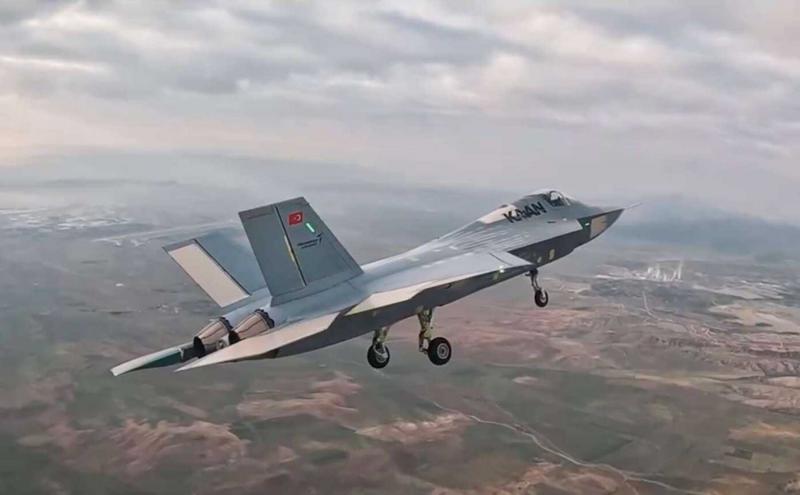In a significant development for Pakistan’s air defense capabilities, the Pakistan Air Force (PAF) is set to acquire the J-31 fighter jet. This advanced aircraft, currently under development by China’s AVIC, has already garnered global attention due to its cutting-edge features.
The J-31’s marketing efforts have been initiated by Chinese AVIC, positioning it as a formidable contender in the international fighter market.
- J-31: The Gyrfalcon Takes Flight
- Design and Development:
- Developed by Shenyang Aircraft Corporation (SAC), the J-31 aims to secure potential export customers while enhancing China’s air defense capabilities.
- Its official nickname, as published by SAC, is the “Gyrfalcon”.
- The J-31 has also been referred to as the “F-60” or “J-21 Snowy Owl” in some media reports, and military enthusiasts have nicknamed it the “Falcon Hawk”.
- Notably, the J-31 was developed independently as a private venture by the aircraft manufacturer, rather than being a program launched and financed by the People’s Liberation Army (PLA).
- Physical Characteristics:
- Length: Approximately 16.9 meters (56.8 feet).
- Height: About 4.8 meters (15.7 feet).
- Wingspan: 11.5 meters (37.7 feet).
- Empty Weight: Around 17 tons.
- Maximum Takeoff Weight: 25 tons.
- The J-31 is designed for missions at medium and low altitudes.
- Public Reveal:
- A 1/4-scale model of the J-31 was showcased at the China International Aviation & Aerospace Exhibition 2012, signaling an intention to offer the aircraft for export.
- The full-scale J-31 airframe was publicly unveiled at the Zhuhai Airshow in November 2014.
- Interestingly, funding for the J-31 came entirely from the company, with no military input.
- Export Potential:
- The J-31 is positioned as an alternative for countries that cannot purchase the F-35.
- Chinese aviation expert Xu Yongling has described the J-31 as an export-oriented low-end latest generation warplane.
- KAAN Project: Pakistan and Turkey Collaborate

In addition to the J-31 acquisition, Pakistan is forging a strategic partnership with Turkish Aerospace Industries. Together, they are working on the KAAN Project, which aims to develop the KAAN national fighter jet. Turkish Deputy Defense Minister Celal Sami Tufekci recently announced that discussions between the two countries are underway to officially include Pakistan in the KAAN program. Approximately 200 Pakistani officials and engineers are already contributing to the KAAN’s development.
- KAAN Specifications:
- Length: The KAAN, formerly known as TF-X, is a sizable aircraft with a length of 21 meters.
- Maximum Speed: It boasts a maximum speed of Mach 1.8.
- Engines: Equipped with twin engines generating 13,000 kg thrust each.
- Mission Capability: The KAAN is strategically designed to engage both air-to-air and air-to-ground targets.
- Domestic Infrastructure: It features a wholly domestic infrastructure for secure data sharing and the use of smart munitions 1.
- Strategic Importance:
- The KAAN is intended to replace the existing F-16 aircraft in the Turkish Air Force inventory.
- It aims to operate alongside critical assets like the F-35 Lightning II.
- The project signifies Turkey’s commitment to developing its own advanced fighter capabilities.
- Both Pakistan and Turkey seek a fifth-generation fighter aircraft to enhance their air superiority.
- Technology Base:
- Pakistan brings valuable expertise to the KAAN project:
- Advanced Sensors: GaN-based highly advanced AESA radars, Distributed Aperture System (DAS).
- High-Speed Datalinks: Cooperative engagement capability (CEC).
- Engine Success: Reliability and performance of high-thrust, super-cruise-capable engines (WS15 for J-20, WS19 for J-35) 2.
The KAAN, expected to be ready by the 2030s, will provide the PAF and the Turkish Air Force with cutting-edge platforms, bolstering their defense capabilities. This collaboration signifies a strategic shift towards diversifying defense partnerships beyond China, as Pakistan and Turkey jointly pave

